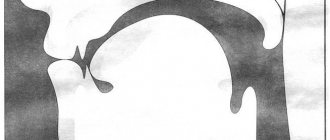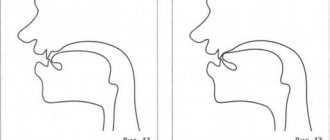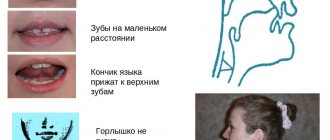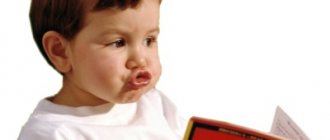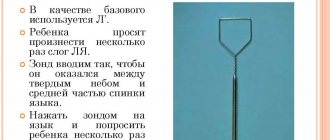Do you know how to explain vowel and consonant sounds and letters to your child? What about hard and soft? Take advantage of our tips, because before going to school, it won’t hurt your child to know how to characterize sounds; this will help him easily master the first grade curriculum.
shkolazhizni.ru
When starting training, you must be sure that the child has an idea of those organs of articulation that take part in the speech process (tongue, lips, teeth). Taking into account preschool age, it is easier to teach to distinguish between vowels and consonants sounds and letters in a playful way.
How to explain vowel and consonant sounds and letters to a child
“Some vowels and completely disagree with someone...” This sounds unusual for a child. To ensure your homeschooling is effective and stress-free, take your time. Catch the promised recommendations.
- The child must know the difference between a sound and a letter.
We hear and speak sounds, we see and write letters.
- Start by learning vowels.
They are much simpler in articulation and easier to perceive. It's simple: you can sing them.
The sound M is also quite worthy of a solo performance, but there is a difference: when pronouncing vowels, the air comes out freely, nothing interferes with it, the tongue lies calmly in the mouth, and with consonants it performs miracles of acrobatics.
- Reinforce spoken sounds with graphic images of letters.
Here your imagination can help you: you can write, sculpt, glue and lay out pasta or beans.
- Use a mirror.
Draw your baby's attention to the position of the mouth when pronouncing vowels, pay attention to the tongue and teeth.
- Together with your child, come up with words that begin with “singing” sounds, look for them not only in oral speech, but also in books, on the street and at home.
Where did O go? Here she is, disguised as a mirror. We found the letter and named the sound.
- Use riddles whose answers begin only with vowels.
- When starting to study consonant sounds and letters, note that there are many more of them and they are pronounced differently.
When we pronounce them, the air “clings” to an obstacle in the form of teeth or lips. In this case, the mirror is your obligatory assistant.
- Offer to “sing” consonant sounds, fixing the child’s attention on the position of the organs of articulation.
A restless tongue constantly interferes when trying to sing, and the teeth become completely capricious and close together.
Vowel sounds and letters
What is a vowel sound? How many vowel sounds and vowel letters are there in the Russian language? What vowel letters can represent two sounds? What are the different vowel sounds? How to find out how many syllables there are in a word?
1. The vowel sound consists only of the voice. When pronouncing vowel sounds, the air stream does not encounter any obstacles. There are 6 vowel sounds in the Russian language : [a], [o], [u], [i], [s], [e].
| VOWEL SOUNDS | |||||
| [A] | [O] | [y] | [And] | [s] | [e] |
2. In writing, vowel sounds are indicated by letters. There are 10 vowels in total . The letters A, O, U, Y, E indicate the hardness of the previous consonant sounds, and the letters Ya, E, Yu, I, E indicate the softness of the consonant sounds.
| VOWELS | |
| A O U Y E | I am Yo Yu and E |
| indicate the hardness of consonant sounds | indicate the softness of consonant sounds |
| March [March] bag [bag] | mint [m❜áta] hatches [l❜uk❜i] |
3. The vowel letters Ya, Yo, Yu, E indicate TWO sounds (consonant sound [й❜] + vowel sound) in the following cases:
- at the beginning of the word: spruce [y❜el❜], hedgehog [y❜osh], yula [y❜ula]
- after the dividing soft and hard signs b and b: blizzard [v❜й❜уа́ка], ate [сй❜е́ла]
- after a vowel: lighthouse [may❜ak], sing [pay❜ut]
| VOWEL LETTERS THAT DEnote TWO SOUNDS | |||
| I [y❜a] | Yo [y❜o] | Yu [y❜y] | E [y❜e] |
4. Vowel sounds can be stressed or unstressed .
One of the syllables in a word is usually pronounced with greater force and duration in the voice. This means that the emphasis falls on it. Such a syllable is called stressed. The vowel sound in this syllable is also called stressed. The remaining syllables in the word are called unstressed .
All 6 vowel sounds are distinguished under stress, i.e. what is pronounced is what is written: water [water], bear [m❜ishka].
In the unstressed position, not all vowel sounds are distinguished. For example, in the word water, instead of [o], it is pronounced [a]: water [vada].
5. Words are divided into syllables . A syllable is one sound or several sounds pronounced by one exhalation push of air. For example: mo-lo-ko, sta-kan, na-u-ka.
In the Russian language there are sounds of different audibility: vowel sounds are more sonorous compared to consonant sounds.
It is vowel sounds that form syllables and are syllabic.
Consonant sounds are non-syllabic. When pronouncing a word, the consonant sounds “stretch” towards the vowels, forming a syllable together with the vowels.
There are as many syllables in a word as there are vowel sounds!
►
We strengthen the ability to distinguish between vowels and consonants sounds and letters
Once you have explained the difference between vowel and consonant sounds and letters, be sure to reinforce the skill you have developed. And play again.
- On the way from kindergarten, together with your child, come up with words that begin with a given sound.
- Draw a sheet of paper into squares, color them red and blue, and ask them to arrange the letters from the cut alphabet into “houses.”
- * Game “Attentive Ears”. The instructions are simple: “If a word begins with a vowel, clap, if a word begins with a consonant, stamp.”
- Come up with a recipe for an unusual dish, the ingredients in which begin only with certain sounds.
- When cleaning the apartment, give the task to first remove all toys that begin with consonants.
Important condition! Systematicity and calmness.
Your positive attitude will not only teach you to distinguish between vowels and consonants, sounds and letters, but also create a desire to learn.
Trainer “Vowels and consonants”. Vowels and consonants Start. - presentation
Trainer “Vowels and consonants”
Vowels and consonants Start
1. Find a picture in the title whose first sound is a vowel.
3. How can you name the pictures in one word? Choose only those birds whose names begin with a vowel sound.
4. How can you name the pictures in one word? Choose only those animals whose names end with a vowel sound.
5. In which series do all words begin with a consonant sound? 12)
5. In which series do all words begin with a consonant sound? 12)
5. In which series do all words begin with a consonant sound? 12)
6. Find the extra picture
1. How can you name all objects in one word? The children were given the task to choose those instruments in the name of which the first consonant sound is hard. Who completed the task correctly?
2. In which row in the title of each picture is the last sound a soft consonant? 12)
2. In which row in the title of each picture is the last sound a soft consonant? 12)
2. In which row in the title of each picture is the last sound a soft consonant? 12)
3. Which gardener plants berries whose names begin with a soft consonant?
4. In which row in the title of each picture is the last sound a hard consonant? 12)
4. In which row in the title of each picture is the last sound a hard consonant? 12)
4. In which row in the title of each picture is the last sound a hard consonant? 12)
5. Find the extra picture
1. How can you name objects in one word? In the name of which object is the first sound a voiced consonant?
3. In which row do all words begin with a voiceless consonant? 12)
3. In which row do all words begin with a voiceless consonant? 12)
3. In which row do all words begin with a voiceless consonant? 12)
4. How can you name objects in one word? Choose those objects whose names begin with a voiced consonant.
1. In which row in the title of each picture is the first consonant sound? 12)
1. In which row in the title of each picture is the first consonant sound? 12)
1. In which row in the title of each picture is the first consonant sound? 12)
2. In which row in the title of each picture is the last vowel sound? 12)
2. In which row in the title of each picture is the last vowel sound? 12)
2. In which row in the title of each picture is the last vowel sound? 12)
3. In which zoo do animals live whose first sound is a soft consonant?
4. Find the extra picture (pay attention to the sonority and dullness of the first sounds)
1. In which row in the title of each picture is the first vowel sound? 12)
1. In which row in the title of each picture is the first vowel sound? 12)
2. In which row in the title of each picture is the last consonant sound? 12)
2. In which row in the title of each picture is the last consonant sound? 12)
2. In which row in the title of each picture is the last consonant sound? 12)
3. Find the extra picture (pay attention to the hardness and softness of the first sounds)
4. Choose a basket containing vegetables whose first sound is a voiceless consonant.
5. Find a picture that begins with a soft voiced consonant
